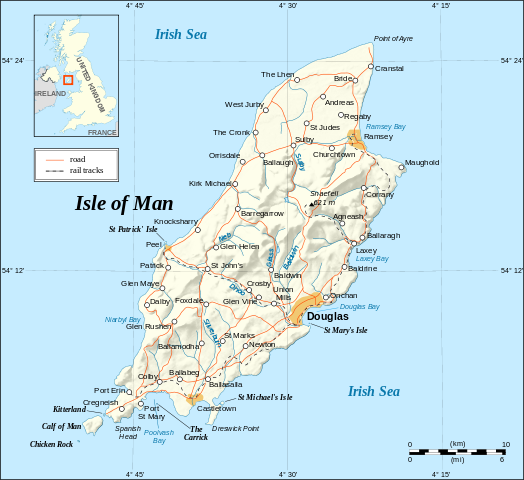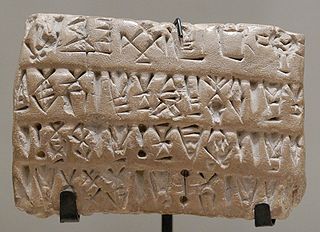Manx: Bringing a language back from the dead
Condemned as a dead language, Manx – the native language of the Isle of Man – is staging an extraordinary renaissance.
Read more here.
A lecture about the Titanic
The other night my mother and I went to listen to a lecture about the Swedish connections to Titanic. There were more than I could have guessed.
The lady who held the lecture is from Liverpool, but I think originally, her family must come from Ireland, judging by her name, which was, at least to me, very Irish. Now she’s living in Sweden and working in a museum in a town not that far from here, with an interesting past.
Having grown up in Liverpool, with its connection to Titanic, she’d always been fascinated in all kinds of shipwrecks, but mainly the Titanic. Before starting the lecture she lit a candle for the victims of the Estonia, since it’s been almost exactly 20 years since that disaster.
She started out telling us about a similar lecture she’d given the week before to a group of Somali refugee women. None of them had higher education, so the lecturer expected them never to have heard of the Titanic but she showed them a photo of the ship and asked if they knew what it was. They all answered together ‘It’s the Titanic!”. So clearly, everyone, everywhere knows something about the Titanic.
We got a chance to look at a photo of the menu for the third class passengers. Since so many of the passengers were Swedish, they had a Swedish type of breakfast, with oatmeal and herrings.
It also turns out that the mechanism that is to lower the lifeboats into the sea, even if the ship is lying on its side, was designed not very far from here, in the town with the movie industry. At the time no one expected the lifeboats to be needed, but this little industry took their responsibility very seriously and did a great job. Apparently, many of the few people who were saved, could thank this mechanism, among other things, for their lives.
During the lecture we were introduced to a number of passengers from the West of Sweden, some of which survived, and some, who didn’t.
There was a young woman, Dagmar, who was going to Chicago to visit relatives, accompanied by her brother, who would serve as her interpreter and, possibly, chaperon, and her fiance. On the fateful night, when they reported to their designated lifeboat, the two young men were told they were not allowed in it. At the time, they didn’t realize there weren’t enough lifeboats. Dagmar said she’d stay behind as well, but the men told her they’d take a later one, and Dagmar reluctantly agreed to depart. Not surprisingly, only Dagmar survived, but was traumatized for the rest of her life.
There was also a young engineer by the name of Kvillner. He had a deprived background, but had worked hard as a waiter, to put himself through a famous technical college. He headed to the UK to board another ship, but due to a coal workers’ strike, he had to take the Titanic instead. Before departing, Kvillner wrote and sent a letter to his fiancee. By the time she received it, he was already dead.
Finally, there was a young man who had escaped to Denmark, to avoid doing his military service. From there, he’d made his way to the UK, then because of the coal strike, was put on the Titanic, instead of the ship he’d been intended to go on.
He and his two friends were hoping to get to know some charming young ladies, but had to content themselves with making new male friends and learning all the ins and outs of the parts of the ship they were allowed on.
The three young men were in the bow of the ship and on the night of the disaster, they were woken by water coming in through the side of the ship. They ran up on deck, aided by their knowledge of the ship. The young man we were told about, had in his hurry left his coat and shoes behind. It was cold up on deck, so he returned to get his outer garments, but when he came downstairs, he found that his cabin was no longer available. The sea had broken in everywhere. He ran upstairs again, to find that the last lifeboat had left.
He looked into the eyes of his two friends and everyone else standing on that deck, reading the same feeling of hopelessness there as he felt. Despite that, he made a desperate vow not to die that night. He thought of his mother and what losing her only son would do to her and determined that he would fight for his life.
Eventually, he ended up in the water, and since he was young and strong, he was able to make his way to an upturned lifeboat. It was already occupied in a way, by several others. Later, the young man was to write about that night, when he ‘did things he didn’t want to remember’. He was one of the few who survived to be picked up by the Carpathia.
Ironically, he who had gone to such lengths to avoid the draft, ended up being drafted into the US army and sent back to Europe to fight in the trenches. He later remarked that if he’d known what he’d had to go through to get to America, he wouldn’t have bothered. But he survived the war and returned home to his town in America, where he was always known as ‘Titanic man’.
Interesting lecture
Today I went to listen to a very interesting lecture about the Norwegian Resistance during WWII, or rather the interactions between the Resistance and Swedish people living close to the Norwegian border.
It was a bit surprising to me that the rather rural, and in my eyes primitive nearby region, the ‘backwoods’, had such a heroic and adventurous past.
The woman who did the lecture had written a book about the interaction with the Resistance, and was apparently behind an exhibition that was the starting point of her book and the lecture we heard today.
Something I had no idea about until today, was that during the war the region (where our little cottage is) was forbidden to any outsider, because of fears of espionage.
One funny story was about a little Finnish ‘war child’ who had been a little too observant in the farm where she lived. She’d found an amazing piece of silk fabric (a parachute) hidden in the barn and had to be kept quiet. So a man, working with the Resistance, who was known to be very eloquent and also kind to children, traveled all the way out into the woods and gave her a big, expensive doll, on the condition that she kept quiet. There was a photo of the girl holding two dolls, one of which was probably the ‘bribe’.
A rather less funny story, was about a Swedish man who for the rest of his life was the target of threats from old Nazis.
Some members of the audience had stories of their own to tell. One of them was really touching and sad. The sister of a man in the Resistance was a journalist. She wasn’t careful enough about her activities and was caught by the Germans and sent to a concentration camp. At the end of the war, she was taken by the famous Swedish White Buses (sent by a Swedish count) to the south of Sweden, but the first night there, she died. Despite what you might think, apparently mother was ‘happy’ that her daughter had died in Sweden (i e not in a gas chamber).
I’m glad I forced myself up at rather an early hour, despite my cold (which isn’t too bad, but still) to go and listen to this lecture. It was fascinating and I learned so much about a time in our history that isn’t very well known to the general public. (For instance, much of this has been classified until recently).
Dandelions
I really love dandelions. Partly because they’re quite simply beautiful, but also because they have other advantages. In the past they were used for medicinal purposes. Guinea pigs and rabbits love to eat them – though they shouldn’t have too much, because it can give them red urine. Finally, it’s a protest against neighbours and the establishment. The last flower is similar to dandelions but smaller. I don’t know their name in either English or Latin. I really like that one too.
Here are some images from our garden:
Five Fascinating Facts about Sir Arthur Conan Doyle | Interesting Literature
Read more here.
50 awesome facts about languages
Read more here.
Breakthrough in world’s oldest undeciphered writing
The world’s oldest undeciphered writing system, which has so far defied attempts to uncover its 5,000-year-old secrets, could be about to be decoded by Oxford University academics.
Read more here.
5 Ways Reading a Book Can Improve Your Life
Read more here.









